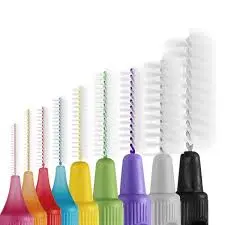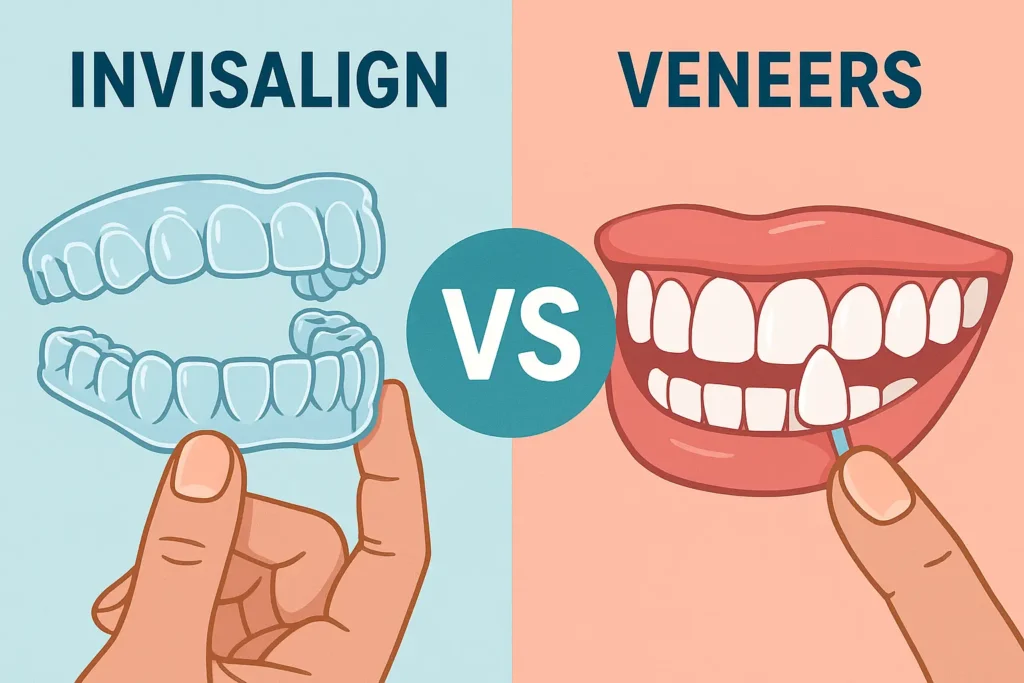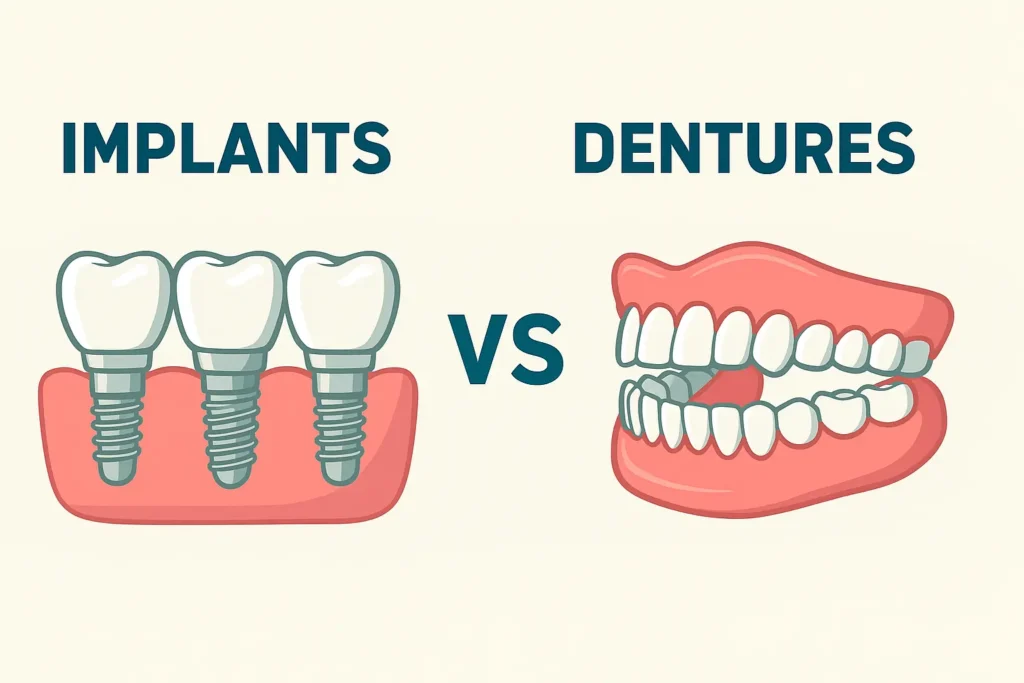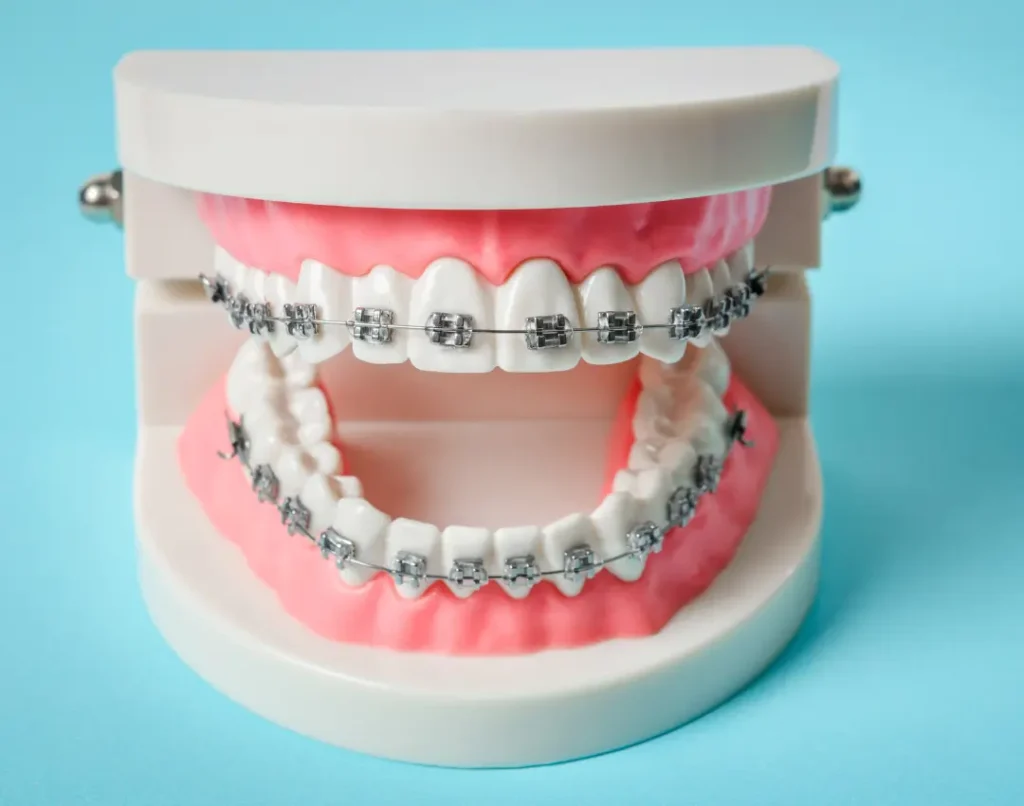I remember using a thread to clean the spaces between my teeth as a kid. Later, when I became a dentist, I learned it is called ‘dental floss’.
Check yourself: do you or your family members floss daily? For most of you, the answer will be ‘No’. I know it.
When patients come to me with dental issues, especially small children, I guide their parents to adopt healthy habits in children like brushing their teeth twice, rinsing their mouth after eating something and doing dental floss at least once a day.
Many people are unaware of dental floss and ask different questions in the consulting room. Hence, today, through this blog, I will clear up all your doubts about dental floss.
Dental floss is a thin, soft thread made of nylon or plastic designed to clean between teeth and along the gumline where a toothbrush can’t reach. It removes food particles and plaque, helping maintain oral health.
Flossing is crucial because it removes plaque and food debris from areas that brushing alone cannot clean. Regular flossing helps prevent cavities, gum disease, and bad breath.
You should floss at least once a day, ideally before bedtime. This ensures food particles and plaque don’t accumulate overnight, keeping your teeth and gums healthy.
Yes, flossing is necessary, even with regular brushing. Brushing cleans the tooth surfaces, but only flossing can effectively remove plaque and debris from between teeth and below the gumline.
To floss correctly:
The proper technique involves sliding the floss gently between teeth, curving it around each tooth, and moving it below the gumline. Clean each tooth side with a fresh section of floss.
It’s best to floss before brushing. Flossing first removes plaque and debris, allowing fluoride from the toothpaste to reach more areas effectively.
Flossing should take about 2–3 minutes to clean your teeth thoroughly. Take your time to ensure every space is cleaned.
Yes, with about an inch of taut floss, hold dental floss between your fingers. Use your thumbs for the upper teeth and index fingers for the lower teeth to guide the floss precisely.
Yes, aggressively over-flossing can damage gums, causing irritation, recession, or bleeding. Once a day is sufficient for maintaining oral health.
To floss with braces:
Use implant-specific floss or a floss threader:
Mint-flavored dental floss is coated with a mint essence, offering a refreshing taste while cleaning between teeth. It makes the flossing experience more enjoyable, encouraging regular use.
Yes, biodegradable floss options, like those made from silk or plant-based materials, are eco-friendly and decompose naturally. They are a sustainable alternative to traditional plastic-based floss.
Unwaxed floss is ideal for people with closely spaced teeth. It is thinner, allowing it to slide easily between tight gaps. However, it may shred more easily compared to waxed floss.
Dental tape is a broader, flatter type of floss, ideal for people with larger gaps between their teeth. Its shape provides better coverage and ease of use for certain users.
Yes, eco-friendly alternatives include:
Expanding floss is designed to stretch and widen as it contacts moisture in the mouth. This allows it to adapt to different gap sizes, providing effective cleaning while being gentle on gums.
Floss picks are small, plastic tools with a short piece of floss attached to a handle. They are convenient for quick flossing, especially when you’re on the go, and are easy to use for those with limited dexterity.
Water flossers use a stream of water to remove plaque and food debris. They are gentler on gums and easier for people with braces, implants, or dexterity issues, but traditional floss is better for physically scraping plaque off teeth surfaces.
Interdental brushes can be more effective than floss for cleaning larger gaps between teeth or around braces. However, floss is better for tight spaces. Both tools can complement each other in an oral hygiene routine.

A floss threader is a flexible, plastic loop designed to help guide floss under braces, bridges, or dental implants. It acts like a needle, threading the floss into hard-to-reach areas for effective cleaning.
Electric flossers, which use vibrations or pulsations, are highly effective for removing plaque and food debris. They are particularly useful for people with braces, sensitive gums, or limited manual dexterity.
Yes, floss holders are worth using if you struggle with traditional flossing. They help hold the floss in place, making it easier to manoeuvre and reach all areas of your mouth without needing as much dexterity.
For people with arthritis, tools that require minimal hand movement are ideal:
Flossing removes food particles and plaque trapped between teeth, areas a toothbrush can’t reach. This prevents the buildup of bacteria that produce acids, reducing the risk of cavities.
Yes, flossing improves gum health by removing plaque that can lead to gingivitis, the early stage of gum disease. Regular flossing reduces inflammation, bleeding, and the risk of periodontitis.
Absolutely! Flossing removes trapped food and bacteria, which are common causes of bad breath. Clean gums and interdental spaces help keep your breath fresh.
While flossing doesn’t directly whiten teeth, it removes plaque and debris that can cause discolouration. This keeps your teeth looking cleaner and healthier.
Flossing reduces oral bacteria, lowering the risk of gum disease. Since gum inflammation is linked to systemic issues like diabetes, heart disease, and respiratory conditions, flossing can positively impact overall health.
Yes, research suggests that gum disease, caused by plaque buildup, increases the risk of heart disease. Flossing helps maintain healthy gums, reducing inflammation and the spread of harmful bacteria into the bloodstream.
Regular flossing prevents gum disease and cavities, which are leading causes of tooth loss. Healthy gums support your teeth, reducing the risk of them loosening or falling out.
Flossing supports pregnancy health by reducing the risk of gum disease, which has been linked to complications like preterm birth and low birth weight. Good oral hygiene, including flossing, is vital for both maternal and fetal health.
Occasional bleeding is common, especially if you’re new to flossing or have gum inflammation. However, consistent bleeding may indicate gum disease and should be evaluated by a dentist.
Yes, flossing can damage gums if done too aggressively or improperly. Snapping floss into the gums or using excessive force can cause cuts, irritation, or gum recession. Always floss gently.
Flossing may hurt if you have sensitive gums, gum disease, or if you’re using improper technique. Gently flossing daily can help improve gum health and reduce discomfort over time.
No, flossing doesn’t create gaps. However, it can reveal pre-existing gaps caused by gum recession or bone loss due to gum disease. Proper flossing maintains the health of existing spaces.
Though rare, some people may be allergic to the materials or coatings in dental floss, such as nylon, PTFE, or wax. Switching to an uncoated, hypoallergenic, or natural floss can help.
Teeth may feel temporarily loose if there is inflammation or advanced gum disease. Proper flossing reduces inflammation over time, which can improve gum attachment and stability.
No, flossing does not remove enamel when done correctly. Enamel is a hard surface, and gentle flossing only removes plaque and debris, not the enamel.
Yes, flossing is safe and highly recommended during pregnancy. Hormonal changes can increase the risk of gum disease, so maintaining good oral hygiene, including flossing, is crucial for both maternal and baby health.
Children should start flossing as soon as they have two teeth that touch, typically around age 2–3. Parents should assist until kids can floss independently, usually by age 8–10.
Yes, floss picks are safe and convenient for children. They are easier for small hands to use and can make flossing less intimidating for beginners.
Waxed, flavoured floss or floss picks designed for children are best. These are gentler on their gums, easier to use, and often come in fun colours or flavours to make flossing enjoyable.
Children should floss once a day, preferably before bedtime, to remove food particles and plaque, keeping their teeth and gums healthy.
Absolutely! Flossing removes plaque and food particles between teeth, areas where toothbrushes can’t reach, significantly reducing the risk of cavities and gum problems.
Yes!
Yes, parents should floss for young children until they develop the dexterity to do it themselves. This ensures proper cleaning and helps establish good habits early on.
Use a soft, gentle floss, preferably waxed, and floss carefully to avoid irritating sensitive areas. If sensitivity persists, consult a dentist, as it may indicate an underlying issue.
Yes, flossing is highly recommended for people with gingivitis. Regular flossing helps remove plaque and reduce inflammation, promoting gum healing and preventing the condition from progressing.
Flossing helps prevent further gum recession by removing plaque and bacteria along the gumline. Use gentle techniques to avoid irritating already sensitive gums, and consider consulting a dentist for tailored advice.
Flossing is essential for managing periodontal disease. It removes plaque and bacteria that exacerbate the condition, helping to prevent further damage to the gums and bone structure. Specialized floss or interdental brushes may be recommended.
Yes, use implant-specific floss or a floss threader to clean around dental implants. Avoid snapping the floss, and ensure you clean gently around the gumline to prevent peri-implantitis (inflammation around implants).
Yes, flossing is safe and necessary for crowns and veneers. Use a gentle, waxed floss and avoid pulling it upward to prevent loosening. Instead, slide the floss out horizontally after cleaning.
Flossing around wisdom teeth requires extra care due to their position. Use floss picks or water flossers for easier access, and ensure you clean thoroughly to prevent decay and gum irritation in hard-to-reach areas.
While flossing doesn’t directly address teeth grinding, it can help prevent complications like cracked teeth or gum recession caused by grinding. Maintaining healthy gums and teeth is essential, especially if grinding causes additional stress on your oral structures.
Yes, alternatives include:
No, mouthwash cannot replace flossing. While it helps kill bacteria and freshen breath, it doesn’t physically remove plaque and debris lodged between teeth like flossing does.
Water flossing:
Floss picks are effective for basic cleaning but may not allow the same level of precision and thoroughness as traditional floss, especially for tight spaces or deep gum cleaning.
No, dental probiotics can complement oral hygiene by promoting healthy bacteria balance but cannot physically remove plaque or debris. Flossing remains essential for mechanical cleaning.
Tongue scrapers and flossing serve different purposes.
Yes, diets high in sticky, sugary, or fibrous foods may require more frequent flossing to remove debris and prevent plaque buildup between teeth.
Absolutely! Sugary foods fuel bacteria in your mouth, increasing the risk of cavities. Flossing after sugary meals helps remove particles stuck between teeth.
Yes, meat fibers can easily get lodged between teeth, making flossing crucial for meat eaters to prevent decay and gum irritation.
Coffee can stain teeth and contribute to plaque buildup. Flossing helps reduce staining between teeth and removes trapped particles, improving overall oral hygiene.
Yes, popcorn kernels often get stuck between teeth and can irritate gums. Flossing after eating popcorn is highly recommended to avoid discomfort or infection.
No, chewing gum can freshen breath and remove surface debris but cannot clean between teeth or below the gum line like flossing does.
High-fiber foods can leave residue or get stuck between teeth, necessitating regular flossing to prevent buildup and ensure thorough cleaning.
Yes, flossing after acidic foods helps remove particles and bacteria, but wait 30 minutes to avoid damaging enamel softened by acid.
Dentists universally agree that flossing is essential for removing plaque and preventing gum disease and cavities in areas brushing cannot reach.
Yes, studies show flossing reduces plaque, gingivitis, and the risk of periodontal disease, though some reviews call for higher-quality research to measure its long-term impact.
In 2015, the U.S. government cited a lack of robust clinical evidence as the reason for removing flossing from dietary guidelines. However, dental experts still advocate for it based on practical benefits.
Hygienists recommend flossing at least once daily to maintain optimal oral health and prevent gum disease.
The dental community supports water flossing as an effective alternative for people with braces, implants, or gum sensitivity, though traditional flossing remains the gold standard.
Most dental associations, including those in the U.S., U.K., and Australia, recommend daily flossing, but the emphasis may vary depending on local research and practices.
Studies consistently link flossing to lower rates of gum disease, cavities, and tooth loss. Long-term research highlights its role in preventing systemic issues like heart disease.
While flossing remains a core oral hygiene recommendation, modern advice emphasizes correct technique and complements traditional flossing with tools like water flossers and interdental brushes.
Yes, apps like Brush DJ and Oral-B’s companion app provide reminders to floss and track oral hygiene habits.
Many smart toothbrushes sync with apps that include flossing reminders and track oral care routines, ensuring a complete hygiene regimen.
Innovations include biodegradable floss, electric flossers with UV sterilization, and smart water flossers with customizable pressure settings.
Yes, some AI-powered devices analyze your flossing technique, provide feedback, and suggest improvements for better results.
3D printing is being explored to create customizable floss holders and advanced dental tools, improving accessibility and personalization.
Emerging wearables integrate oral care tracking, offering reminders and analytics to ensure consistent flossing.
Nanotechnology enhances floss by incorporating antimicrobial coatings or particles to kill bacteria and reduce plaque formation.
IoT-enabled flossers connect to apps, providing real-time data on usage, technique, and progress, encouraging regular and effective flossing.




